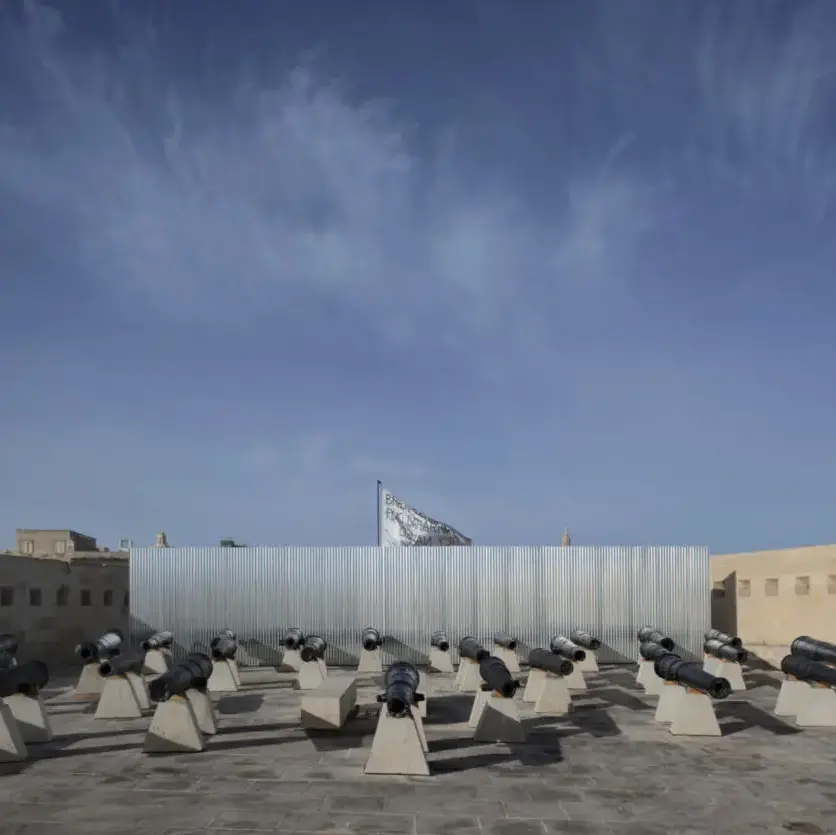Unlike many biennials with overarching curatorial themes, the newly launched Malta Biennale prioritizes the visions of individual artists rather than making grand statements about art. This approach reflects a belief in artists and their autonomy.
Malta emerges as an ideal host for a global event like a biennial due to its rich cultural, linguistic, and geographical diversity, serving as a crossroads of influences from North Africa, Europe, and the Arab world. Simon Benjamin’s installation “Pillars (2023)” visually represents this intersectionality, inviting viewers to peer into shipping barrels transformed into portals revealing videos from various regions across the globe.
The biennial showcases a mix of newly commissioned artworks and existing pieces placed in striking locations across the island. The underwater and archaeological locations from Rosa Baba’s film “Inside the Outset: Evoking a Space of Passage (2021),” which was filmed in Cyprus, are on exhibit in tunnels under Valletta’s Saint John’s Co-Cathedral, creating a poignant juxtaposition with the historical setting.
Tania Bruguera’s contribution sheds light on Maltese politics by installing a giant EU flag, subsequently altered by a local graffiti artist to feature a ring of barbed wire with a poignant message about the treatment of migrants. This installation serves as a reminder of Malta’s role as a port for Mediterranean crossings and calls out European countries for their neglect of responsibility towards such hubs.
Guadalupe Maravilla’s sculpture, addressing migration and healing, is exhibited in a church, where the Catholic imagery enhances the thematic resonance. The performance “Embassy (2023)” by Suez Canal Republic features a dancer interacting with a disused exploration rover in the natural landscape of Gozo island, creating a sense of otherworldliness in the environment.
The exhibition also features works addressing the theme of gentrification. Angolan artist Edson Chagas presents a striking series of photographs titled “Common Walls (2022-23),” which depict architectural fragments that resemble paintings or extracted building elements. Chagas captures moments revealing the effects of gentrification in various urban settings, such as peeling paint hinting at a building’s past.
At the opening of the Malta Biennale, political performances were a notable feature, a tradition that has recently waned in major art events. Maltese artists Keit Bonnici and Niels Plotard wrapped a red telephone booth, a symbol of British colonialism, in bubble wrap to protest its designation as a protected element of Maltese heritage by the Malta Planning Authority, challenging the notion of ownership and heritage.
The Malta Biennale 2024 commenced in March and will continue through May 31, 2024.



